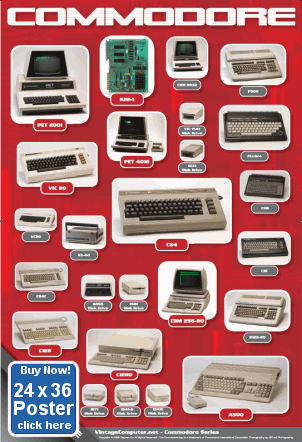 VC Blog | Contact
VC Blog | Contact
Charles Babbage's Calculating Machine
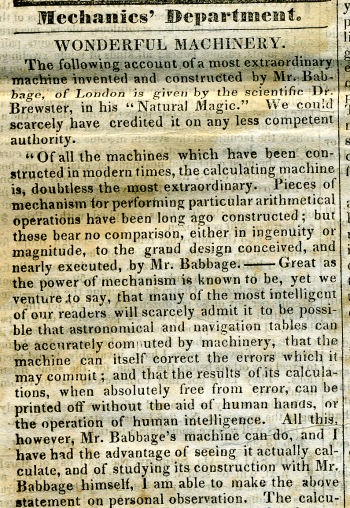
A relatively unknown and fascinating account of Charles Babbage's Calculating Machine from the New York Weekly Messenger 2-13-1833. Click for PDF of the entire article.
WONDERFUL MACHINERY.
This article describes in some detail the eye-witness account of a *working* machine: "...the greater part of the calculating machine is already constructed....I have had the advantage of seeing it actually calculate, and of studying its construction with Mr. Babbage himself..."
Does this account describe a working computer? To help make this determination I would want to learn more about the error checking capability of this machine, which I assume was used for calculation of significant digits. Babbage's calculating machine could be described as a computer component, at least. I believe that this article reports the closest Babbage got to a actual working computer. Or just an elaborate calculator. There are no references in the article to what we today would identify as punch cards or programming.
Download the PDF and read for yourself. The article describes error checking and how results are viewed and how log tables could be calculated accurately, for use in astronomy. The article noted that regarding the printer "..less progress was made...".
In the 1830's news from Europe would take a few weeks to reach New York, as boat was the only cross-Atlantic communications. Most articles in the paper refer to end of December 1832 events, including the account of the Calculating Machine.
Overall there was a lack of contemporary articles about Babbage's calculating machine in 1832-35. I was able to find just the one often quoted article by D Lardner: "Babbage's Calculating Engines" from the Edinburgh Review 59 (1834) pg 263-327. The New York Weekly Messenger article above was printed a year prior, making it among the first known articles about Babbage's calculating machine. The apparent lack favorable press and the loss of funding in 1834 obscured the fact that the machine had a working visual "display" and was probably more complete than people realize. Was the calculating machine programmable? Maybe. Most writings about the Babbage projects were published a generation afer the project was cancelled and I don't think that it's possible to discount the notion entirely.
Comments?.
Closing in on the Apple Lisa 25th Birthday

The Apple Lisa and Apple ][e were featured in the February 1983 issue of Byte Magazine.
The feature article from this issue was titled "The Lisa Computer System." Author Gregg Williams wrote:
Performance
"..The Apple Lisa was faster than I remembered a similar machine being (an experimental Xerox machine running Smalltalk) and faster than I expected it to be. Granted, a 68000 microprocessor is in the computer, but it was being asked to do a lot - including the manipulation of 32K bytes of video-display�memory. Objectively, I must report some delays (30 seconds, maybe) when loading in files, but these were shorter than what I usually encounter using CP/M-based business programs. In any case, I didn't notice any delays while actually using a given program, which is where you spend most of your time, anyway. I expect that the Lisa computer you'll see in Apple showrooms will be slightly faster than the one I saw.
Conclusions
As you can tell, I am very impressed with the Lisa. I also admire Apple for deciding to make the system without being unduly influenced by cost or marketing constraints. The Lisa couldn't have been developed without such a deep commitment, and no other company I can think of could afford such a project or would be interested in doing it this way (the Lisa project reportedly cost over $50 million and used more than 200 person-years of effort!). In terms of the actual, as opposed to symbolic, effect it will have on both the microcomputer and the larger-computer market, the Lisa system is the most important development in computers in the last five years, easily outplacing IBM's introduction of the Personal Computer in August, 1981.
As this went to press, Apple announced that the Lisa will be sold in one configuration only: the computer with 1 megabyte of RAM, two floppy-disk drives, the Profile hard disk, the six application programs (Lisa Draw, Lisa Write, Lisa Project, Lisa Calc, Lisa List, and Lisa Graph), and Lisa Test diagnostic program; the price of this package is $9995; it will be available in the U.S. this spring, and modified foreign-language versions will be available this summer.
Fortunately for us, the history of computing does not stop with the Lisa. Technology, while expensive to create, is much cheaper to distribute. Apple knows this machine is expensive and is also not unaware that most people would be incredibly interested in a similar but less expensive machine. We'll see what happens."
The later model Lisa 2/10. Click for larger image
More Pictures
1985 cordata PPC
Here's a rare one...The CorData Technologies, Inc. Cordata PPC computer. The logo looks similar to the Corona Data Systems' logo, but there's no reference to this model within the Corona catalog. Maybe they changed their name late in the game?
The cordata PPC computer with an extra monochrome monitor on top. Click for larger image

Here's a view of the boot screen. Note the IO.SYS Click for larger image.
If you know more about this computer or company, please share your knowledge.
Toshiba 3100SX and T3200SX Laptops
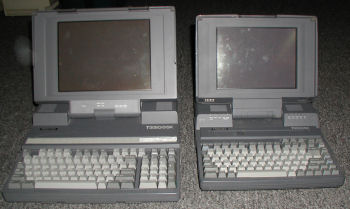
Click Image for larger version
I have a Toshiba 3100SX and a T3200SX laptop that do not boot to their harddrives. The 3200 has a power supply problem, the 3100 has a hard drive problem. I believe that they're salvageable, but I am not overly interested in them. Contact me if you want them cheap.
Past Issues:
Before we switched over to a blog format, past page archives here:
Vintage Computer Festival East 3.0 June 2006
Commodore B Series Prototypes July 2006
VOLSCAN - The first desktop computer with a GUI? Oct 2006
ROBOTS! - Will Robots Take Over? Nov 2006
Magnavox Mystery - a Computer, or? Jan 2007
The 1973 Williams Paddle Ball Arcade Computer Game Feb 2007
The Sperry UNIVAC 1219 Military Computer May 2007
VCF East 2007 - PET 30th Anniversary June/July 2007
The Electronic Brain August 2007
Community Memory and The People's Computer Company October 2007
Charles Babbage's Calculating Machine December 2007
Vintage Computing - A 1983 Perspective February 2008
Laptops and Portables May 2008
From Giant Brains to Hobby Computers - 1957 to 1977 August 2008
Historic Computer Magazines November 2008
World's Smallest Electronic Brain - Simon (1950) December 2008 - Feb 2009
Free Program Listings Spring 2009
Computer Music Summer 2009
Popular Electronics Jan/Feb 1975 - Altair 8800 Fall 2009
Early Microcomputer Mass Storage Summer 2010
On the Work Bench - Dec 2007
These are some of the computers and things that I am currently working on, or have recently picked up. Check my Vintage Computer Blog for updates, or post your questions.Cromemco System Three
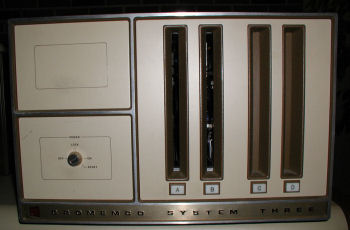
Click Image for larger version
I picked up a donation consisting of a complete Cromemco System Three Model with dual 8" drives (PerSci) CS3 S/N: 31856. The condition is excellent. There are few scratches, color nice, etc. The system came with the Cromemco desk (same desk as seen in the brochure), the computer fits in the desk. Drive A does not detect the presence of a disk, or it detects the disk but cannot engage the disk. The B drive seems to be OK. I can get to RDOS at least, the system monitor.
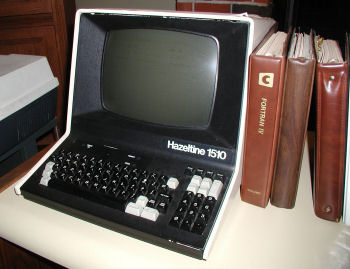
Hazeltine 1510 computer terminal. Click Image for larger version
Hazletine 1510 - The display. Does not exit local mode needs repair. The keyboard is good and all keys work. There is a tiny bit of screen burn, but the picture is strong and there's no mold. Also pictured are Cromemco system manuals, Fortran IV and a CDOS. s/n: 213442-001 model: 4DTD155255
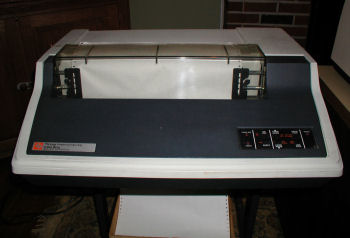
Texas Instruments Omni 800 / 810 RO Terminal. Click Image for larger version
Very Good Cond. part number 0994293-0002 s/n 04711 42035 parallel
More restoration project information here
The CGRS Front Panel System
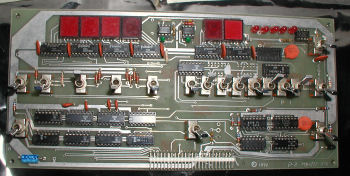
Click Image for larger version
CGRS Microtech introduced their front panel 6502 single board computer interface in 1977. I have not found any articles or ads for this product yet. Fortunately I have the documentation that came with the unit.
"..The CGRS FRONT PANEL is a direct memory access (DMS) type microcomputer control panel. It is totally hardware based microcomputer control that independently supplies static logic levels to perform various control functions and does not depend on microcomputer operation. ..."
More information here
Texas Instruments TM990/189

Click Image for larger version
I have not had much time to play with this system, but this one is on the short list, stand by for updates...I want to learn more about the 9900 processor. In addition your obligatory TI 99-4A with expansion unit, I also have a more exotic 990/101 development system of some kind.
Click for updates and pics
TRS 80 Model 4 P - How to boot to Model III mode
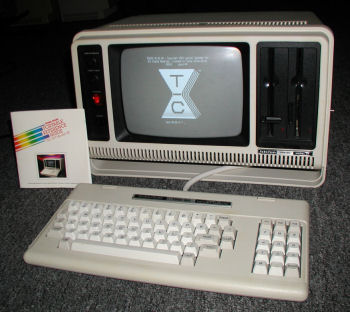
Click Image for larger version
I picked up a TRS 80 Model 4P with a nice white chassis. I took a sampler of boot disks that are known to work on a regular Model 4. I thought I would test them on the 4P (it came with no software).
NEW DOS 8
TRS DOS 6.2
LDOS 5.14
DOS Plus 3.5
DOS Plus 3.4
TRS DOS 1.3
When I try them on the 4P, I get the following message:
"Loading ROM Image"
...and then a few seconds later the error message:
"The ROM Image Was Not Found on Drive 0"
EXCEPT when I boot TRS DOS 6.2
The manual indicates that TRSDOS 6 ships with the 4P. It is that simple, you can only boot a 4P with 6.x? Click here to find the answer.
Replacing an Apple /// Power Supply
Power supply removed. Click Image for larger version
I received a dead Apple III so I took out the power supply for inspection. I noticed that the 5mf 2 3/4 A fuse was blown. A work in progress.
Classic Computing Items for Sale:
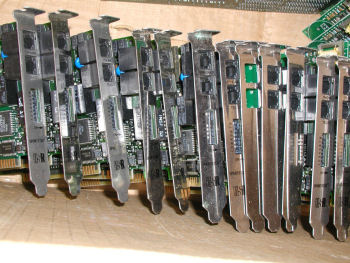
| CBM Commodore B Series Software (B-128 / CBM 700) | ||
| Superscript II Word Processor | $29.99 | |
| Superbase Database Manager | $29.99 | |
| Commodore Advanced Business Systems (CABS) Acccounting Suite: Accounts Payable, Order Entry, Accounts Receivable, General Ledger (4 binders) | $29.99 | |
| More CBM Commodore Items | ||
| Commodore B-128/700 Programmer's Reference Guide - Protecto - Everything you need to know about the B line! | SOLD OUT | |
| B Series Commodore Users Guide - View Image | $39.99 | |
| Commodore Users Guide Series 8000 | $39.99 | |
| Commodore BASIC Users Refence Manual Version 4.0 | SOLD OUT | |
| Commodore CBM Expansion Memory Board 64K Expansion Kit for PET 8032 (NOS) | SOLD OUT | |
| Commodore PET Keyboard (NOS) for 2001 -N, 3000, 4000 Series | SOLD OUT | |
| Other Commodore CBM Power supplies, software, parts, etc. | Contact Me | |
| Tandy Items | ||
| Aeoromp Double Density Controller for TRS 80 Model 1 Expansion Unit (NOS)- details | SOLD OUT | |
| Model III / Model 4 (non-gate array only) RS-232 KITS details | SOLD OUT | |
| Model III / Model 4 (non-gate array only) RS-232 boards only | SOLD OUT | |
| Model III Aerocomp Diskdrive controller | $39.99 (free US Ship) | |
| Looking for Something Else? | ||
| Please check here first with special requests for Commodore, IBM, Tandy, Atari, TI, Apple computers, parts, components, and software. I have systems plus zounds of miscellaneous items for sale or trade. | ||
For more information about the C Prompt found at the top of each page, click here.
All photography on this web site is © VintageComputer.net/Bill Degnan and cannot be reproduced without permission.
This web site has two purposes.
For years I have been making research notes while in the process of restoring classic computer systems, and I also like to record tidbits of information that I think might be useful in the future. This web site is a way to share this information for research purposes. I will also post restoration project reports, project summaries, users guides, tutorials, and items wanted. I invite anyone who wishes to contribute their comments to the VC Blog to do so. My goal is to publish new content in the field of classic computing.
The second purpose of this web site is to sell off my duplicate items. Unless otherwise stated, all items for sale are in working order. If you wish to post items for sale on the VC Blog, please indicate clearly the operational status of the item(s).
All photography on this web site is © VintageComputer.net/Bill Degnan and cannot be reproduced without permission.
This web site has two purposes.
For years I have been making research notes while in the process of restoring classic computer systems, and I also like to record tidbits of information that I think might be useful in the future. This web site is a way to share this information for research purposes. I will also post restoration project reports, project summaries, users guides, tutorials, and items wanted. I invite anyone who wishes to contribute their comments to the VC Blog to do so. My goal is to publish new content in the field of classic computing.
The second purpose of this web site is to sell off my duplicate items. Unless otherwise stated, all items for sale are in working order. If you wish to post items for sale on the VC Blog, please indicate clearly the operational status of the item(s).
